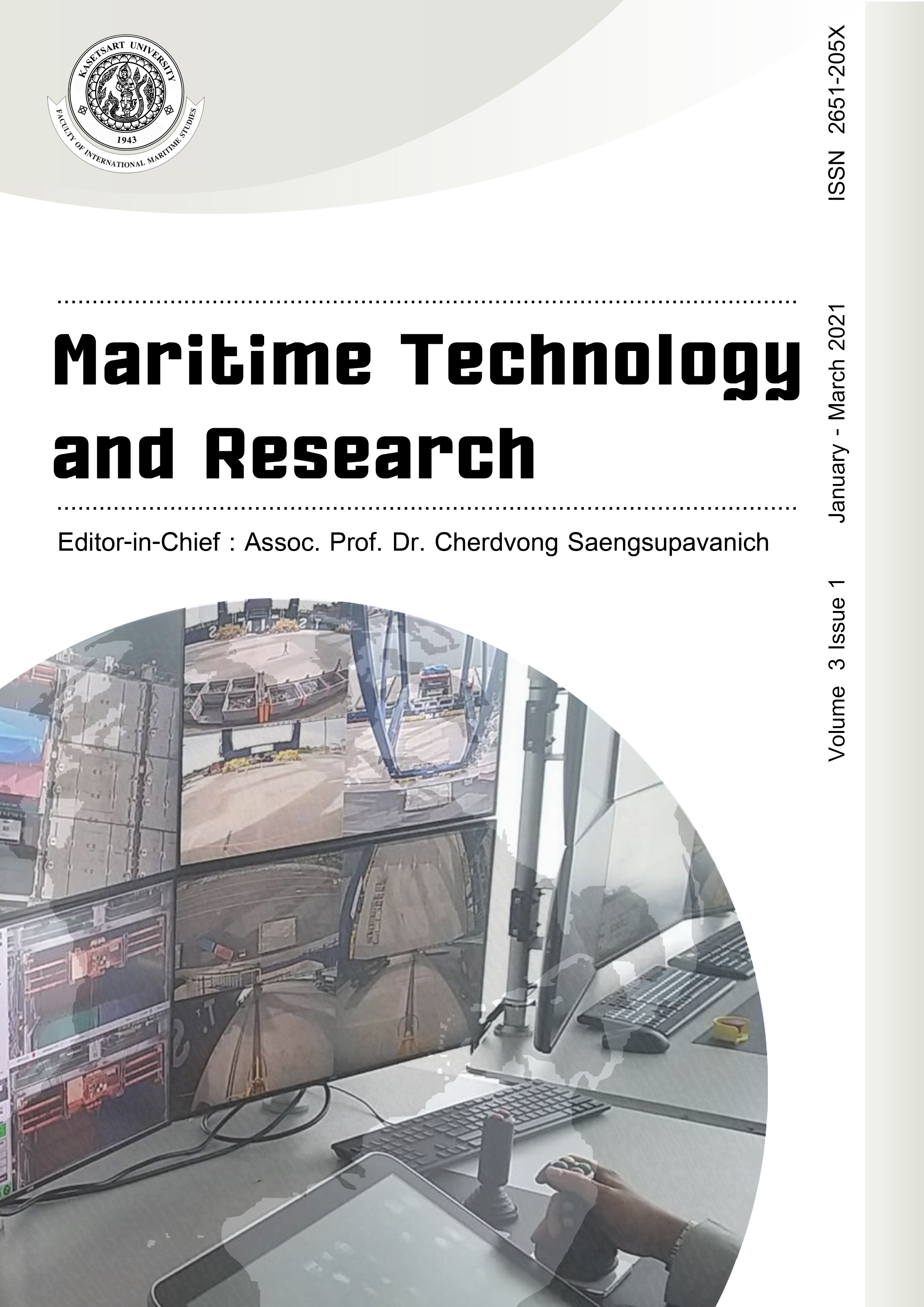A novel vortex-induced vibration-based piezoelectric powered generator for maritime propulsion systems
DOI:
https://doi.org/10.33175/mtr.2021.241124Keywords:
Vortex Induced Vibration, Piezoelectric, Vortex shedding, Spring constantAbstract
Vortex Induced Vibrations (VIVs), a phenomenon where fluid flow causes oscillations against an object called a bluff body by vortex shedding, have been studied as a source of renewable energy. However, few studies have focused on the use of VIVs for maritime propulsion. In this investigation, a novel VIV-based piezoelectric generator and rechargeable battery were created for use as a maritime propulsion system. The purpose of this research was to see if piezoelectricity is a feasible source of power for a maritime propulsion system. It was hypothesized that, if different velocities are applied to a piezoelectric generator, then 3.4 m/s would produce the most power to operate a model ship. In order to determine the feasibility of the generator, testing was conducted in stages, where each stage saw different modifications to the generator. Each generator design was then exposed to 8 different velocities. Afterwards, the data was analyzed through the use of line graphs, box plots, and ANOVAs. It was determined that, although the hypothesis was partially supported in some cases, it was ultimately not supported due to the behavior of the most powerful configuration. Furthermore, the ANOVA tests determined that p < ⍺, meaning that significant differences existed between frequencies as a result of velocity and spring constant, while the number of piezoelectric transducers and velocity affected the voltage. No combination achieved enough output to sufficiently operate a model ship. However, the effectiveness of the generator can be improved by implementing an efficient circuit and modification of the transducers.
References
Dai, H. L., Abdelkefi, A., Yang, Y., & Wang, L. (2016). Orientation of bluff body for designing efficient energy harvesters from vortex-induced vibrations. Applied Physics Letters, 108(5), 053902. doi:10.1063/1.4941546
Franzini, G. R., & Bunzel, L. O. (2018). A numerical investigation on piezoelectric energy harvesting from vortex-induced vibrations with one and two degrees of freedom. Journal of Fluids and Structures, 77, 196-212. doi:10.1016/j.jfluidstructs.2017.12.007
Jbaily, A., & Yeung, R. W. (2014). Piezoelectric devices for ocean energy: A brief survey. Journal of Ocean Engineering and Marine Energy, 1(1), 101-118. doi:10.1007/s40722-014-0008-9
Martinez, T., Pillonnet, G., Vasic, D., & Costa, F. (2019). A longitudinal traveling wave piezoelectric transformer. Sensors and Actuators A: Physical, 293, 37-47. doi:10.1016/j.sna.2019.04.014
Mehmood, A., Abdelkefi, A., Hajj, M., Nayfeh, A., Akhtar, I., & Nuhait, A. (2013). Piezoelectric energy harvesting from vortex-induced vibrations of circular cylinder. Journal of Sound and Vibration, 332(19), 4656-4667. doi:10.1016/j.jsv.2013.03.033
Shimpalee, S. (2019). The impact of damper properties on the amplitude and frequency of bluff body behaviors under vortex-induced vibration for maritime engines. South Carolina Junior Academy of Science. Retrieved from https://scholarexchange.furman.edu/scjas/2019/all/273
Zhang, M., & Wang, J. (2016). Experimental study on piezoelectric energy harvesting from vortex-induced vibrations and wake-induced vibrations. Journal of Sensors, 2016, 1-7. doi:10.1155/2016/2673292
Downloads
Published
Issue
Section
License
Copyright (c) 2020 Maritime Technology and Research

This work is licensed under a Creative Commons Attribution-NonCommercial-NoDerivatives 4.0 International License.
Copyright: CC BY-NC-ND 4.0







